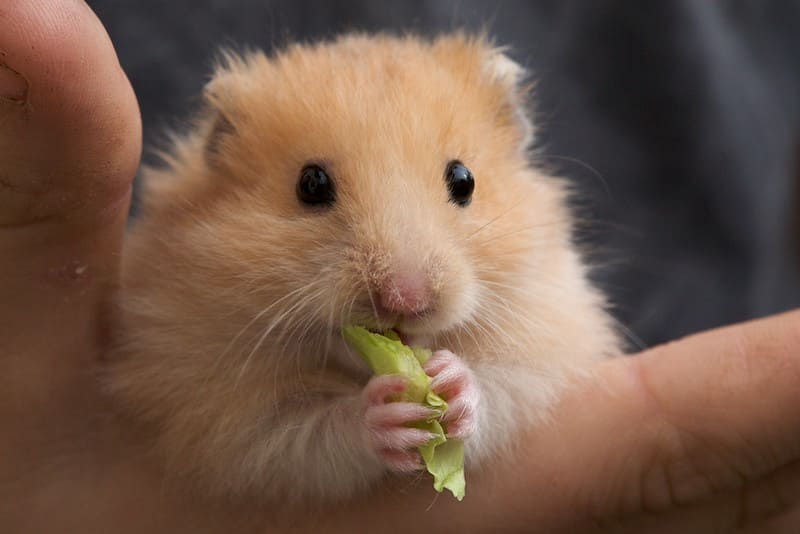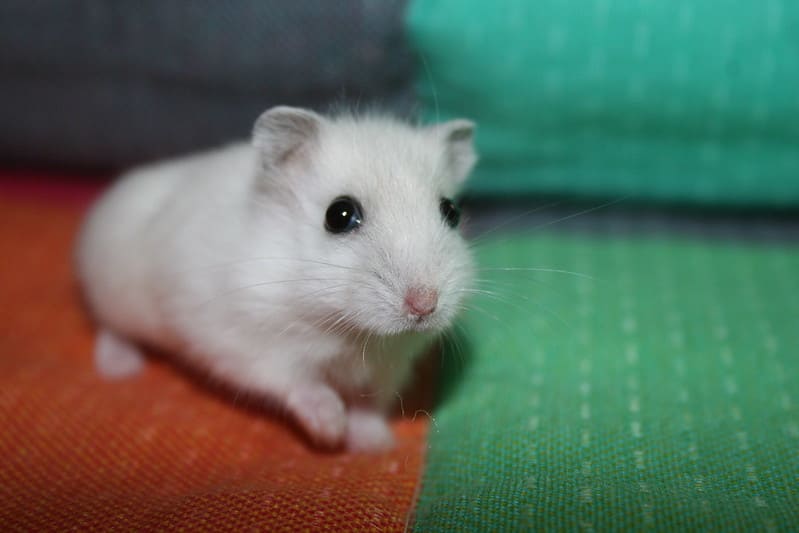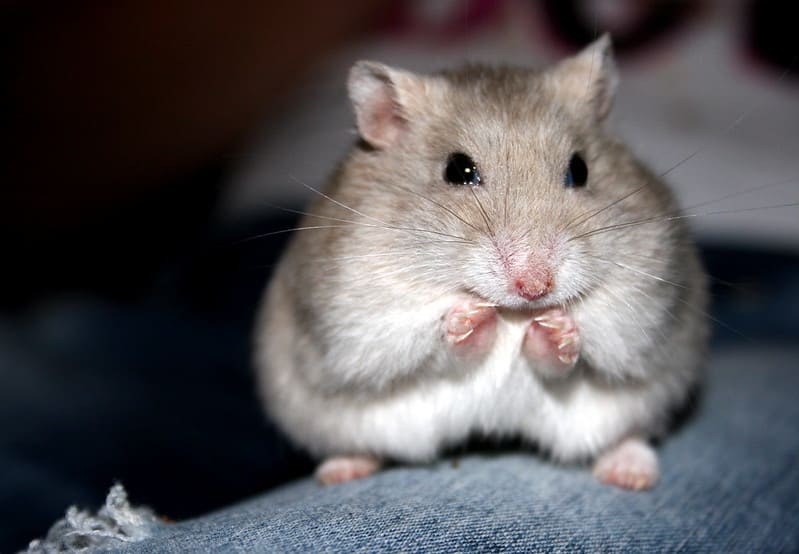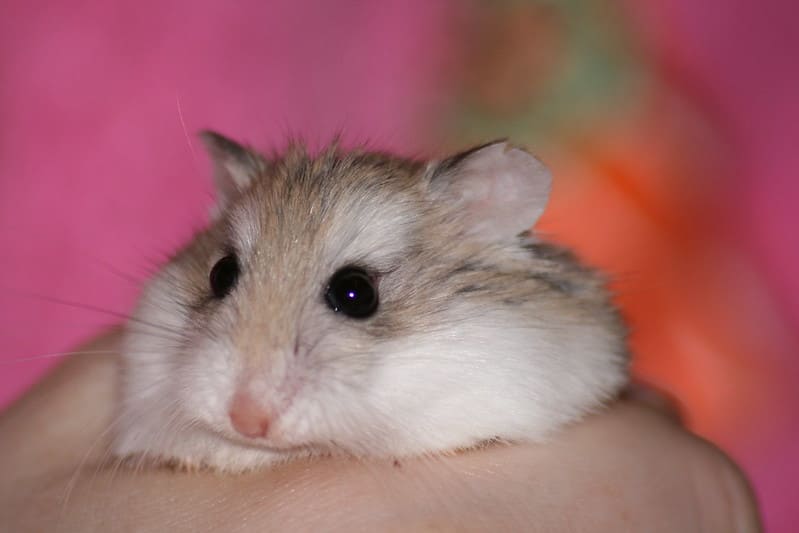Hamsters are small, adorable, and popular pets that have captivated the hearts of people worldwide. These tiny rodents come in various colors, patterns, and coat lengths, leading many to wonder if there are different breeds or types of hamsters. In this extensive guide, we will explore the fascinating world of hamsters, their various species, and the distinctions that make them unique.

The Most Common Hamster Species
Several hamster species are kept as pets, with the following being the most popular:
1. Syrian Hamsters (Mesocricetus auratus):
- Syrian hamsters, also known as Golden or Teddy Bear hamsters, are the most popular pet hamster species. They are typically larger than other hamsters, with a length of about 6 to 7 inches.
- These hamsters have a solitary nature and should be housed alone, as they are prone to territorial disputes if placed with other hamsters.
- Syrian hamsters come in various coat colors, including golden, cream, and cinnamon, and they may have different coat patterns, such as the banded or tortoiseshell pattern.
2. Dwarf Hamsters (Phodopus spp.):
- Dwarf hamsters are smaller than Syrian hamsters, measuring approximately 2 to 4 inches in length. They are known for their agility and active nature.
- There are several dwarf hamster species commonly kept as pets, including Roborovski hamsters, Campbell’s dwarf hamsters, and Winter White dwarf hamsters.
- Dwarf hamsters are social creatures and can often be kept in pairs or small groups if introduced at a young age. However, it’s essential to monitor their interactions, as they can become territorial.
3. Chinese Hamsters (Cricetulus griseus):
- Chinese hamsters are another small hamster species, usually around 3 to 4 inches in length. They have a distinctive long tail compared to other hamster species.
- These hamsters are known for their gentle disposition and relative ease of handling.
- Chinese hamsters are often kept as pets in Asia and are gaining popularity in other regions.
4. Roborovski Hamsters (Phodopus roborovskii):
- Roborovski hamsters are one of the smallest hamster species, measuring around 2 inches in length. They are characterized by their speed and agility.
- These hamsters are highly social and are best kept in pairs or small groups. They have a reputation for being quite active and entertaining to watch.
5. Campbell’s Dwarf Hamsters (Phodopus campbelli):
- Campbell’s dwarf hamsters are slightly larger than Roborovski hamsters, with a length of around 3 to 4 inches.
- They are social animals and can often be kept together when introduced properly.
- Campbell’s dwarf hamsters are available in various colors and patterns.
6. Winter White Dwarf Hamsters (Phodopus sungorus):
- Winter White dwarf hamsters are similar in size to Campbell’s dwarf hamsters, with a length of approximately 3 to 4 inches.
- They are social creatures and can be kept in pairs or small groups. These hamsters are known for their ability to change fur color based on the season and lighting conditions.

Lesser-Known Hamster Species
In addition to the most common hamster species, there are lesser-known species that are occasionally kept as pets. These species may have distinct characteristics and care requirements:
1. European Hamster (Cricetus cricetus):
- The European hamster, also known as the common hamster, is a larger species that can measure up to 13 inches in length.
- Unlike most hamsters, European hamsters are omnivorous and hibernate during the winter months.
- They are rare in the pet trade and may have specific legal regulations in some areas.
2. African Pygmy Hamster (Mystromys albicaudatus):
- The African Pygmy hamster is native to southern Africa and is not commonly kept as a pet.
- They have a long tail and are relatively small in size, measuring about 3 to 4 inches in length.
3. Turkish Hamster (Mesocricetus brandti):
- Turkish hamsters are found in parts of the Middle East and are not a common choice for pets.
- They are medium-sized hamsters with distinctive coloration and patterns.
4. Long-Tailed Hamster (Tscherskia triton):
- The long-tailed hamster, also known as the Korean hamster, is native to East Asia and has a long tail compared to other hamsters.
- While not widely available in the pet trade, they are occasionally kept as pets by enthusiasts.
Distinctive Characteristics and Traits
Each hamster species has its own unique characteristics and traits that set them apart. Understanding these distinctions can help you choose the right hamster for your lifestyle and preferences:
1. Size:
- Syrian hamsters are the largest of the pet hamster species, while Roborovski and Winter White dwarf hamsters are among the smallest.
- Size can impact the space requirements, such as the size of the cage or enclosure needed.
2. Behavior:
- Syrian hamsters are generally solitary and may become aggressive towards other hamsters if housed together.
- Dwarf hamsters, on the other hand, are more social and can often be kept in pairs or small groups.
3. Coat Color and Patterns:
- Syrian hamsters come in a variety of coat colors and patterns, allowing for personal preferences in appearance.
- Dwarf hamsters may also exhibit different coat colors and patterns, and some, like the Winter White, can change color with the seasons.
4. Tail Length:
- Chinese hamsters have a longer tail compared to other hamster species, which is one of their distinguishing features.
5. Activity Level:
- Roborovski hamsters are known for their high activity levels and constant movement, making them entertaining to watch.
- Syrian hamsters are more relaxed and tend to be active during the night.
6. Tolerance to Handling:
- Chinese hamsters are often considered more tolerant of handling and interaction with humans.
7. Lifespan:
- The lifespan of hamsters can vary among species, with Syrian hamsters typically living for around 2 to 3 years and some dwarf species having shorter lifespans.

Specific Care Requirements
Different hamster species may have specific care requirements based on their unique characteristics and behaviors:
1. Cage Size:
- Larger species, like Syrian hamsters, require larger cages with more space for exercise and exploration.
- Dwarf hamsters can do well in smaller enclosures, but it’s essential to provide a stimulating environment.
2. Social Needs:
- Syrian hamsters are best kept alone due to their territorial nature.
- Dwarf hamsters are social animals and may benefit from having a same-sex companion, but careful introduction is necessary.
3. Nutritional Needs:
- While the basic dietary requirements are similar for all hamster species, specific dietary preferences and sensitivities may exist. For instance, some species may have a preference for certain types of food.
4. Enrichment and Toys:
- Providing enrichment and toys is important for all hamsters, but the types of toys and activities that engage them can vary among species.
- For instance, Roborovski hamsters, with their high activity level, may benefit from more intricate toys and exercise equipment.
5. Handling and Socialization:
- The willingness to be handled and socialized can differ among hamster species. Some may be more receptive to interaction with humans, while others may be more reserved.
Breeding and Genetics
Breeding hamsters is a complex and regulated process in many regions. Those interested in breeding hamsters should be aware of the genetic factors that influence coat color, patterns, and other traits. Breeding hamsters also requires a thorough understanding of the specific species’ needs and compatibility.

Conclusion
In conclusion, there are indeed different breeds or types of hamsters, each with its own unique characteristics, behaviors, and care requirements. Choosing the right hamster species for your lifestyle and preferences is crucial to providing a happy and healthy life for your pet. Whether you opt for the more common Syrian hamster or venture into the world of dwarf hamsters and lesser-known species, understanding the distinctions among hamster species is the first step to being a responsible and knowledgeable hamster owner. Always research and consider the specific needs of the hamster species you choose, and provide them with the care and attention they deserve.
